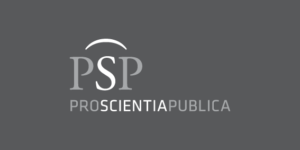Identifying and Overcoming Hostility in Mediation of Interpersonal Conflicts
DOI:
https://doi.org/10.15503/jecs2025.3.197.211Keywords:
hostility, conflict, conflicting parties, hostility identification methods, methods to overcome hostility, conflict mediationAbstract
Thesis. The article is devoted to developing practical exercises and recommendations for reducing the level of hostility to avoid serious consequences and find constructive ways of conflict resolution, and developing a conflict mediation plan based on the conflicting parties’ hostility level monitoring.
Concept. Organisation of the conflicting parties behaviour monitoring, which makes it possible to recognise hostile attitudes and helps better understand how the conflict affects the interaction between the parties and what emotional reactions and motivations guide their behaviour.
Results. The concept of hostility is identified as a stable human characteristic, expressed in the tendency to have a negative attitude towards others, suspicion, aggressiveness and conflict. The psychological aspects of hostility, its impact on emotions, behaviour and perception of the conflicting parties are considered. The effectiveness of methods of establishing markers of hostility, as well as techniques of emotional and behavioural impact on the conflicting parties is analysed.
Conclusions. Successful resolution of destructive conflicts is possible only if the attitude between the parties is transformed – from hostile to cooperative. The effectiveness of counseling largely depends on the appropriately chosen format of work: both joint and separate modes of interaction have their strengths and require consideration of the specific circumstances of the conflict.
Originality. Practical tools for mediators to reduce the level of hostility between the parties to a conflict are described, including techniques of decentering, word choice, and positive attitudes.
Downloads
References
Berkout, O. V., Tinsley, D., & Flynn, M. K. (2019). A review of anger, hostility, and aggression from an ACT perspective. Journal of Contextual Behavioral Science, 11, 34–43. https://doi.org/10.1016/j.jcbs.2018.12.001
Birkley, E. L., & Eckhardt, C. I. (2015). Anger, hostility, internalizing negative emotions, and intimate partner violence perpetration: A meta-analytic review. Clinical Psychology Review, 37, 40–56. https://doi.org/10.1016/j.cpr.2015.01.002
Borysiuk, O. M. (2023). Doslidzhennia osoblyvostei ahresyvnoi povedinky studentiv v umovakh viiny [Study of the peculiarities of students' aggressive behavior in war conditions]. In V. S. Blikhar (Eds), Psykholohiia osobystosti fakhivtsia v umovakh voiennoho chasu ta postvoienoi reabilitatsii [Psychology of the personality of a specialist in wartime and post-war rehabilitation] (pp. 46-51). Lvivskyi Derzhavnyi Universytet Vnutrishnikh Sprav. https://dspace.lvduvs.edu.ua/bitstream/1234567890/6501/1/27_10_2023.pdf
Buss, A. H. (1961). Aggression, Anger, and Hostility. In A. H. Buss, The psychology of aggression (pp. 1–16). John Wiley & Sons, Inc. https://doi.org/10.1037/11160-001
Buss, A. H., & Perry, M. (1992). The aggression questionnaire. Journal of Personality and Social Psychology, 63(3), 452–459. https://doi.org/10.1037/0022-3514.63.3.452
Fabiansson, E. C., & Denson, T. F. (2016). Anger, hostility and anger management. In H. Friedman (Eds), Encyclopedia of Mental Health, 2nd Edition, Vol 1 (pp. 64–67). Academic Press. https://doi.org/10.1016/B978-0-12-397045-9.00200-7
Felsten, G., & Hill, V. (1999). Aggression Questionnaire hostility scale predicts anger in response to mistreatment. Behaviour Research and Therapy, 37(1), 87–97. https://doi.org/10.1016/s0005-7967(98)00104-1
Hrabovska, S. (2020). Psykholohiia prymyrennia [Psychology of Reconciliation]. Lvivskyi Natsionalnyi Universytet Imeni Ivana Franka.
Izard, C. E. (1977). Anger, Disgust, and Contempt and Their Relationship to Hostility and Aggression. In C. E. Izard, Human Emotions. Emotions, Personality, and Psychotherapy (pp. 329–354). Springer. https://doi.org/10.1007/978-1-4899-2209-0_13
Kadievska, І. А., & Wright, H. Y. (2022). Vorozhist yak moralna vada ta hlobalna problema suchasnosti [Hostility as a moral defect and a global problem of modernity]. Perspektyvy. Sotsialno-Politychnyi Zhurnal, 4, 47–52. https://doi.org/10.24195/spj1561-1264.2022.4.7
Lisovenko, А., & Dolinska, L. (2020). Spetsyfika vorozhosti y ahresyvnosti osib, skhylnykh do perezhyvannia zazdroshchiv za riznym typom [The Specifics of Hostility and Aggression of Persons Prone to Experiencing Envy of Various Types]. Yurydychna Psykholohiia, 1(26), 31–39. https://doi.org/10.33270/03202601.31
Oleksiienko, S. B. (2017). Problema vorozhosti v suchasnii ekstremalnii psykholohii [The problem of hostility in modern extreme psychology]. In V. P. Sadkovyi, & O.V. Timchenko (Eds). Aktualni doslidzhennia v suchasnii vitchyznianii ekstremalnii ta kryzovii psykholohii [Current research in modern domestic extreme and crisis psychology] (pp. 46–63). Natsionalnyi Universytet Tsyvilnoho Zakhystu Ukrainy.
van Teffelen, M. W., Lobbestael, J., Voncken, M. J., & Peeters, F. (2020). Uncovering the hierarchical structure of self-reported hostility. PloS One, 15(9). https://doi.org/10.1371/journal.pone.0239631
Verhoef, R. E. J., Alsem, S. C., Verhulp, E. E., & De Castro, B. O. (2019). Hostile Intent Attribution and Aggressive Behavior in Children Revisited: A Meta-Analysis. Child Development, 90(5), 525–547. https://doi.org/10.1111/cdev.13255
Yehorova, O. B. (2019). Osoblyvosti proiavu vorozhosti u khloptsiv i divchat pidlitkovoho viku [To the question of gender features of teenager’s hostility]. Problemy Suchasnoi Psykholohii, (22), 133-146. https://journals.uran.ua/index.php/2227-6246/article/view/159540
Downloads
Published
Issue
Section
License
Copyright (c) 2025 Denys Melnyk, Sofiia Hrabovska, Nataliia Hrebin, Nadiia Levus

This work is licensed under a Creative Commons Attribution 4.0 International License.
CC-BY
Authors retain copyright and grant the journal right of first publication with the work simultaneously licensed under a Creative Commons Attribution License that allows others to share the work with an acknowledgement of the work's authorship and initial publication in this journal. All authors agree for publishing their email adresses, affiliations and short bio statements with their articles during the submission process.


